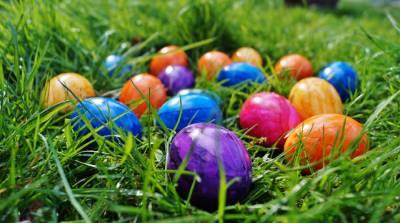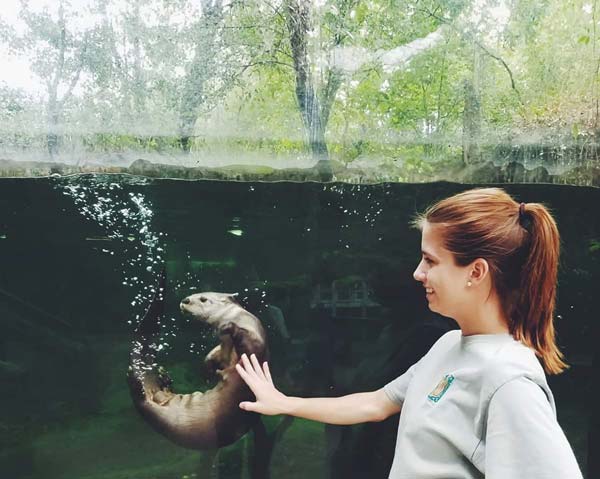Avoid the Halloween Candy Blues
Are you one of the many parents who have to suffer through their children’s temper tantrums and moodiness in the days following Halloween? You may be surprised to learn that these and other behavior problems are often due to synthetic food dyes and certain other additives found in the candy that kids consume on this popular holiday.
“If your children act up after eating lots of Halloween candy, you might be tempted to blame the sugar, but the most likely culprits are petroleum-based food dyes,” said Jane Hersey, National Director of the nonprofit Feingold Association (www.feingold.org), a charity that helps special needs children.
“Unlike sugar, these additives can lead to hyperactive behavior for days after kids have eaten the offending candies,” said Hersey, whose eldest daughter’s behavior was helped by the low-additive Feingold Diet.
In fact, a Food and Drug Administration panel recently concluded that synthetic food dyes can have a detrimental effect on some children’s behavior and narrowly rejected requiring warning labels on foods containing these additives. The FDA’s conclusions were based upon numerous scientific studies that support the link between synthetic food dyes and hyperactivity.
A 2007 study led by Dr. Jim Stevenson, published in the British medical journal Lancet, found that synthetic food dyes can trigger hyperactive behavior in all children, not just those diagnosed with attention deficit hyperactivity disorder (ADHD). Dr. Stevenson later reported to the British government that the harm done by these dyes to children’s IQ is similar to the impact of lead and that banning these additives might “result in a 30 percent reduction in the prevalence of ADHD in children.”
A 2011 study led by Dr. Lidy Pelsser also found that when 41 young children with ADHD completed a restricted additive-free diet, 78% of them had improved behavior. When suspected problem foods were reintroduced into the diet, two-thirds of the children experienced a relapse in symptoms.
Studies such as these have prompted the European Union to require labels on most foods containing synthetic food dyes to warn that these additives “may have an adverse effect on activity and attention in children.” The British government also called on manufacturers to voluntarily remove the dyes and advised parents to limit their children’s consumption of dyed foods if they show signs of ADHD.
“Europe is way ahead of the United States in regulating synthetic food dyes, because parents there have been more vocal about the harmful effects these chemicals have on their children’s behavior,” said Hersey.
Protect Kids from Devilish Dyes
Hersey offers these tips to parents desiring a calmer Halloween:
- Feed them first. Be sure your child goes trick-or-treating with a full stomach to discourage them from eating candy along the way.
- Offer a swap. Exchange the synthetic candies that your children bring home for natural candies, homemade treats like cookies, or new toys.
- Limit the damage. Go through the stash with your child to toss out the brightly colored candies.
- Offer a buy-out. Offer to buy the candy your child collects.
- Visit a pumpkin patch. Take the kids to a pumpkin patch to pick their favorite pumpkins for Jack-o-Lanterns or homemade pumpkin pie.
- Throw a Halloween Party. Feature natural treats and include a costume competition, a scary movie, and spooky music like Rimski-Korsakov’s Night on Bald Mountain. (Decorating the house for the party can also be a fun family activity.)
- Buy natural candy. To find natural versions of popular candies like dark and milk chocolates, peanut butter kisses, fruit candies, chocolate mint patties, and hard candies, check out the Feingold Association’s Foodlist & Shopping Guide, Mail Order Guide, and other publications (www.feingold.org).
- Plan a candy-free outing. Arrange for a special evening at the skating rink, bowling alley, or movies, followed by healthy treats.
“Halloween and the days following it do not have to be stressful,” said Hersey. “If you follow these suggestions, you and your family will not be singing the Halloween candy blues.”
The Feingold Association
The nonprofit Feingold Association (www.feingold.org / 800-321-3287) helps parents use the Feingold Diet, which eliminates synthetic food dyes, artificial flavorings, and certain preservatives. This diet was developed by pediatrician/allergist Dr. Ben Feingold. The charity conducts in-depth research with food companies and provides members with information about which foods are free of harmful additives. Its advisory board and board of directors include medical professionals from Johns Hopkins University, the University of Rochester, Stony Brook University, Baltimore’s Sinai Hospital, and other institutions.
Individual dietary needs vary and no one diet will meet everyone’s daily requirements. Before starting any new diet, check with your doctor or nutritionist.
Jane Hersey
Jane Hersey is National Director of the Feingold Association and author of Why Can’t My Child Behave? A former teacher and Head Start consultant, she has testified before the National Institutes of Health, the U.S. Department of Agriculture, and Congress about ADHD and diet. She frequently lectures at education associations, hospitals, medical groups, universities, and schools, and she spearheaded one of the first low-additive school food programs in the country in the 1980s.
Federal Register, Vol. 75, No. 230, December 1, 2010.
McCann D, Barrett A, Cooper A, et al. Food additives and hyperactive behaviour in 3-year-old and 8/9-year-old children in the community: a randomised, double-blinded, placebo-controlled trial.Lancet. Nov 2007;370(9598):1560-7.
“Banning food additives ‘could cut hyperactivity by 30 per cent,’” Daily Mail, April 2008.
Pelsser LM, Frankena K, Toorman J, et al. Effects of a restricted elimination diet on the behaviour of children with attention-deficit hyperactivity disorder (INCA study): a randomised controlled trial. Lancet Feb 2011;377(9764):494-503
“Modernising the rules on food additives and labelling of azo dyes,” European Parliament, July 8, 2008.




































